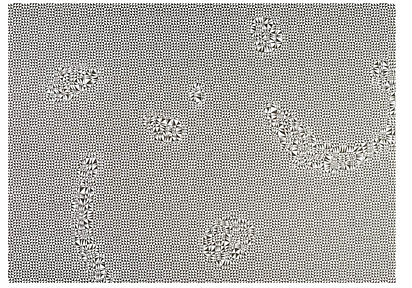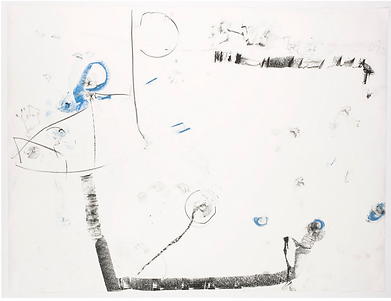Unit1
course contexts
Talking Painting Artist’s Talk: Matthew Krishanu
Artist Matthew Krishanu's images are inspired by photos that people share with him and from his family albums. In his paintings, he combines thin paints with bold brushstrokes to create a strong sense of contrast. Memory and imagination are at the heart of his work, and he also thinks about how to combine his paintings with the history of painting, so that certain images resonate with the viewer. At the same time, his way of creation is very attractive to me. He first composed pictures on the sketchbook through his own imagination and memory, and then integrated some details filtered out from memory by combining photos. Make your frame exist somewhere between a precise photograph and something looser and more temporary.



Sketch creation process by Matthew Krishan
In the following picture creation, I will first construct the whole picture in the form of collage of photos collected by myself. In ordinary times, I am also troubled that I may be limited to refer to pictures in my image creation. By referring to Matthew Krishanu 's practice, I try to combine collaged photos with my own imagination and memory in my creation, so that these two elements can reach a state of balance in the images I create.

Skeleon, oil on canvas, 150×200cm, 2014
Reference
Matthew, K (2014) Skeleon.
Available at: https://www.matthewkrishanu.com/paintings/anothercountry_gallery?47 (Accessed at 28 November 2022)
Drawing Reflections Seminar Lines of Empathy a project by Giulia Ricci
Artist Giulia Ricci launched the Resonant Lines project, a collection of hand-painted works on paper by 16 artists. The subject also has the same title as a book by Giulia Ricci. The project "Resonance Lines" was launched to explore, on the one hand, the process of marking while drawing on paper, and, on the other hand, to show empathy through the act of being in touch with the experiences of others.
Invited artists were asked to talk in detail about their chosen works of art on paper, including their choice of paper, media and processes of use, as well as sharing their own relationships with their bodies and senses; I also expressed my views on the impact of the epidemic on the personal practices of current artists.
In her series order/disruption, isosceles right triangles are used as grid structures to break the ordered pattern structure in the picture through different combinations such as distortion, amplification and repetition. In relation to my creative practice, since my previous creations were represented by the combination of drawing characters and scenes, I want to replace local scenes with ordered or disordered pattern combination in my future pictures, and try to express the atmosphere of the picture, the mood rhythm of characters and so on combined with the depiction of characters.

Order/Disruption no 71, 2014, light-fast Indian ink and brush pen on paper, 33 × 34 cm

Order/Disruption no 37, 2011, Indian ink pen and pencil on paper, 50 × 70 cm
Reference
Giulia, R (2014) Order/Disruption. Available at: http://thedrawingworks.com/projects/giulia-ricci/ (Accessed at 20 October 2022)
Giulia, R (2011) Order/Disruption. Available at: http://thedrawingworks.com/projects/giulia-ricci/ (Accessed at 20 October 2022)
Professor Paul Coldwell Drawing Reflections Talk
In this lecture, Professor Paul Coldwell introduced some artists related to drawing and their works, and interpreted the concepts and creation methods of their works. What attracts me most are the works of these two artists, Paula Rego and Trisha Brown respectively.

Drawing for ‘The Dance’, ink on paper, 29.6×42.1cm, 1988

Drawing for ‘The Dance’, ink on paper, 29.6×42.1cm, 1988
Paula Rego's Drawing for ‘The dance’collection is drawn in pen and brush, and the ink is mostly one or two shades of brown, with a few drops of diluted black in the sky and shadows. Loose pen lines outline dancing girls to make the figures jump easily, and different shades of ink are used to create light and shadow effects.
The paintbrush does not belong to our body. When people are making movement, the paintbrush carried on their body will inevitably bring obstacles. Artist Trisha Brown combines the brush with the body. She puts the pen between her fingers and toes on a huge paper, and forms her unique drawing language through her movement expression and memory on the paper. The drawing process, that is, some ideas during creation, is interpreted more aesthetically by Trisha Brown in this work.
The works of these two artists both contain elements of dance. One creates through traditional drawing media, while the other dances on the drawing paper and builds drawing language by moving the brush with his body. In my recent project practice, I am also trying to use video recording in creation, trying to break the traditional way of drawing.

Trisha Brown “It’s a Draw/Live Feed” 2008

Trisha Brown “It’s a Draw/ Live Feed” 2003
Reference
Paula Rego,(1988) Drawing for ‘The Dance’. Available at: https://www.tate.org.uk/art/artworks/rego-drawing-for-the-dance-t05538(Accessed at 1 November 2022)
Trisha Brown,(2003)It’s a Draw/Live Feed. Available at:
https://teaching.ellenmueller.com/walking/2021/11/26/trisha-brown-its-a-draw-live-feed-2003-2008/(Accessed at 1 November 2022)